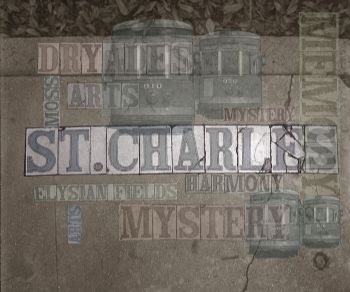| |
|
| |
The VESTIGES Project was formed in 1984 as an ongoing, loosely-knit collective of artists and writers who share a common sense of place - New Orleans - and a common sensibility nurtured by the New Orleans environment. To VESTIGES Project participants, New Orleans signifies far more than merely a place on a map: it is an entity with a complex and eclectic culture, made up of layer upon layer of remnants, relics, rituals, memories and myths, and characterized by a hazy distinction between fiction and truth, facade and reality, past and present, that is peculiar to New Orleans. Debra Howell
|
The New Orleans Memory Project is both a repository and an investigation: of our collective memory and identity; of the influence of our culture on our memories; of the relationship between our memories and our history. We’d like this site to act as the mirror before which we assess our each-day-older selves, and to which we attach our photos, our memorabilia, our hodgepodge of disparate items we want to mark, to remember, to keep close. Hopefully, we can use the strength of our collective memories and cultural identity to effect the plans for the future of our beloved city. While VESTIGES Project artists and writers will act as moderators, this project welcomes all contributions. Anyone can respond to an entry with comments, but contributions of text, images, audio and video clips should be sent via email to admin@thevestigesproject.org
| | Pre-K | Post-K |
|
Time in odd moments.
|
The dense layers of New Orleans' ongoing milieu create a world in which the senses are easily overwhelmed: sound and color and words collide with and blend into one another; emotions are hard to discern, because one is at pains to conceal one's deepest responses and present a carefree face. Assemblages of words and objects and materials are hammered out that convey the sense of the New Orleans within-- the dynamic processing of experience that is the constant activity of the self-- comprised of memory, people, objects, streets, houses, sounds, smells. New Orleans' inhabitants are among the most self-assured people in the New World, largely because they assimilate without question a culture whose whole fabric (both strengths and flaws) appears as "givens". It is not always clear what is being built up and what is breaking down-- which resembles the floating, isolated moment that New Orleans seems perpetually to exist in spiritually, while the real-world process of birth and decay goes on busily nonetheless.
By poet Carolyn Maisel, from "Contemporary Memorials" catalogue
|
|
|
Comments (0)
|
|
|

|
|
How did/do/will/should we remember?
|
Memorials provide an unending source of fascination. This is not only unique to Berlin, a city whose history is so contentious—in terms of its past conflicts as well as the interpretation of that past—but is evident in just about every place where people have ever lived (I imagine).
For any culture, society, or community, there is always so much at stake with the memorials it creates, as if there was only one chance to mark the memory of the past with one grand gesture of finality: “This happened here, and this is how we remember it. Forever and ever.” Every memorial is bound to questions of representation and symbolism—who is represented? what is symbolized?—and ultimately to the question of authority—who decides how the past is represented and how a group’s values are symbolized? And then, an architect or an artist (or groups of these) is commissioned with the task of creating something which embodies all of these unfixed and imprecise ideas and psychologies of remembrance in one final gesture. Once you begin to look a bit deeper at a memorial and the process of its becoming, you can learn so much about a place and its citizens and its (contested) notion(s) of itself.
J. Beaudry
Link URL:
About Place in Place of: Berlin
|
|
|
Comments (0)
|
|
|

|
|
Street Names
|

"New Orleans Streets", by Debra Howell
|
|
|
Comments (0)
|
|
|

|
|
Social Memory
|
I believe that the importance of personal memory, made up collectively as local, or even national memory, has only begun to be realised by social historians, some of whom now write of "social memory" or "popular memory." It is appropriate that we connect the two terms "memory" and "mythology" and it is appropriate also to visit questions concerning their interconnectivity.
In France, Pierre Nora's pioneering work, Les Lieux de Memoire, unhappily translated into English by his American publishers as "Realms of Memory," provides a framework for any historian wishing to study the relationship between history, memory and their cultural reference points--images, sounds, institutions, memorials, buildings, texts and the many other iconic forms with which nations and peoples surround themselves in an attempt at self-identification. These are, after all, the memoria technica of the human mind and the human experience.
Bob Bushaway, Department of Modern History, University of Birmingham, UK
|
|
More
|
Comments (0)
|
|
|

|
| |
|
|


